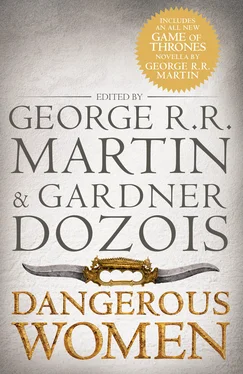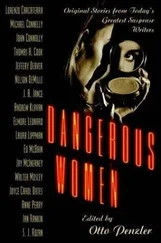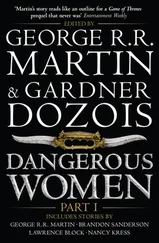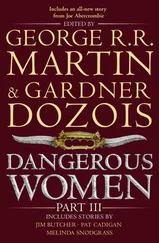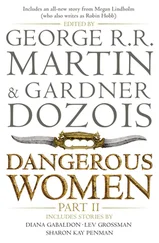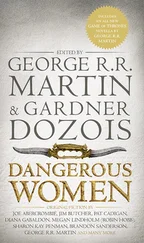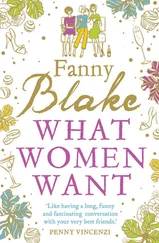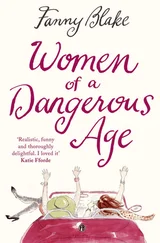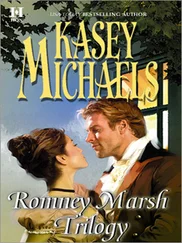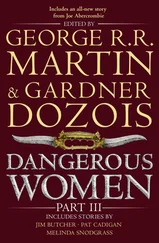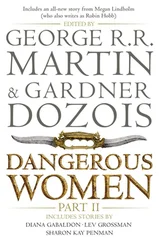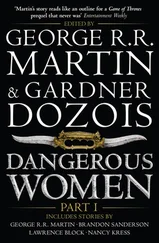DANGEROUS WOMEN
EDITED BY
GEORGE R. R. MARTIN
AND
GARDNER DOZOIS

Harper Voyager
An imprint of HarperCollins Publishers Ltd.
1 London Bridge Street
London SE1 9GF
www.harpercollins.co.uk
First published in Great Britain by Harper Voyager 2013
Copyright © George R.R. Martin and Gardner Dozois 2013
Dangerous Women / Edited by George R.R. Martin and Gardner Dozois.
“Some Desperado” Copyright © 2013 by Joe Abercrombie
“My Heart Is Either Broken” Copyright © 2013 by Megan Abbott
“Nora’s Song” Copyright © 2013 by Cecelia Holland
“The Hands That Are Not There” Copyright © 2013 by Melinda Snodgrass
“Bombshells” Copyright © 2013 by Jim Butcher
“Raisa Stepanova” Copyright © 2013 by Carrie Vaughn
“Wrestling Jesus” Copyright © 2013 by Joe R. Lansdale
“Neighbors” Copyright © 2013 by Megan Lindholm
“I Know How to Pick ’Em” Copyright © 2013 by Lawrence Block
“Shadows for Silence in the Forests of Hell” Copyright © 2013 by Brandon Sanderson
“A Queen in Exile” Copyright © 2013 by Sharon Kay Penman
“The Girl in the Mirror” Copyright © 2013 by Lev Grossman
“Second Arabesque, Very Slowly” copyright © 2013 by Nancy Kress
“City Lazarus” Copyright © 2013 by Diana Rowland
“Virgins” Copyright © 2013 by Diana Gabaldon
“Hell Hath No Fury” Copyright © 2013 by Sherrilyn Kenyon
“Pronouncing Doom” Copyright © 2013 by S. M. Stirling
“Name the Beast” Copyright © 2013 by Sam Sykes
“Caretakers” Copyright © 2013 by Pat Cadigan
“Lies My Mother Told Me” Copyright © 2013 by Caroline Spector
“The Princess and the Queen” Copyright © 2013 by George R. R. Martin
The author of each individual story asserts their moral rights, including the right be identified as the author of their work
A catalogue copy of this book is available from the British Library
This novel is entirely a work of fiction. The names, characters and incidents portrayed in it are the work of the author’s imagination. Any resemblance to actual persons, living or dead, events or localities is entirely coincidental.
All rights reserved under International and Pan-American Copyright Conventions. By payment of the required fees, you have been granted the non-exclusive, non-transferable right to access and read the text of this e-book on screen. No part of this text may be reproduced, transmitted, down-loaded, decompiled, reverse engineered, or stored in or introduced into any information storage and retrieval system, in any form or by any means, whether electronic or mechanical, now known or hereinafter invented, without the express written permission of HarperCollins.
Source ISBN: 9780007549405
Ebook Edition © NOVEMBER 2013 ISBN: 9780007549412
Version: 2018-06-20
This ebook contains the following accessibility features which, if supported by your device, can be accessed via your ereader/accessibility settings:
Change of font size and line height
Change of background and font colours
Change of font
Change justification
Text to speech
To Jo Playford, my dangerous minion.
[—George R. R. Martin]
Contents
Cover
Title Page
Copyright
Copyright
Dedication
Introduction
Some Desperado by Joe Abercrombie
My Heart Is Either Broken by Megan Abbott
Nora’s Song by Cecelia Holland
The Hands That Are Not There by Melinda Snodgrass
Bombshells by Jim Butcher
Raisa Stepanova by Carrie Vaughn
Wrestling Jesus by Joe R. Lansdale
Neighbors by Megan Lindholm
I Know How to Pick ’Em by Lawrence Block
Shadows For Silence in the Forests of Hell by Brandon Sanderson
A Queen in Exile by Sharon Kay Penman
The Girl in the Mirror by Lev Grossman
Second Arabesque, Very Slowly by Nancy Kress
City Lazarus by Diana Rowland
Virgins by Diana Gabaldon
Hell Hath No Fury by Sherrilyn Kenyon
Pronouncing Doom by S. M. Stirling
Name the Beast by Sam Sykes
Caretakers by Pat Cadigan
Lies My Mother Told Me by Caroline Spector
The Princess and the Queen by George R. R. Martin
Footnote
About the Publisher
Introduction by Gardner Dozois
Genre fiction has always been divided over the question of just how dangerous women are.
In the real world, of course, the question has long been settled. Even if the Amazons are mythological (and almost certainly wouldn’t have cut their right breasts off to make it easier to draw a bow if they weren’t ), their legend was inspired by memory of the ferocious warrior women of the Scythians, who were very much not mythological. Gladiatrix, women gladiators, fought other women—and sometimes men—to the death in the arenas of Ancient Rome. There were female pirates like Anne Bonny and Mary Read, and even female samurai. Women served as frontline combat troops, feared for their ferocity, in the Russian army during World War II, and serve so in Israel today. Until 2013, women in the U.S. forces were technically restricted to “noncombat” roles, but many brave women gave their lives in Iraq and Afghanistan anyway, since bullets and land mines have never cared whether you’re a noncombatant or not. Women who served as Women Airforce Service Pilots for the United States during World War II were also limited to noncombat roles (where many of them were nevertheless killed in the performance of their duties), but Russian women took to the skies as fighter pilots, and sometimes became aces. A Russian female sniper during World War II was credited with more than fifty kills. Queen Boudicca of the Iceni tribe led one of the most fearsome revolts ever against Roman authority, one that was almost successful in driving the Roman invaders from Britain, and a young French peasant girl inspired and led the troops against the enemy so successfully that she became famous forever afterwards as Joan of Arc.
On the dark side, there have been female “highwaymen” like Mary Frith and Lady Katherine Ferrers and Pearl Hart (the last person to ever rob a stagecoach); notorious poisoners like Agrippina and Catherine de Medici, modern female outlaws like Ma Barker and Bonnie Parker, even female serial killers like Aileen Wuornos. Elizabeth Báthory was said to have bathed in the blood of virgins, and even though that has been called into question, there is no doubt that she tortured and killed dozens, perhaps hundreds, of children during her life. Queen Mary I of England had hundreds of Protestants burnt at the stake; Queen Elizabeth of England later responded by executing large numbers of Catholics. Mad Queen Ranavalona of Madagascar had so many people put to death that she wiped out one-third of the entire population of Madagascar during her reign; she would even have you executed if you appeared in her dreams.
Popular fiction, though, has always had a schizophrenic view of the dangerousness of women. In the science fiction of the 1930s, ’40s, and ’50s, women, if they appeared at all, were largely regulated to the role of the scientist’s beautiful daughter, who might scream during the fight scenes but otherwise had little to do except hang adoringly on the arm of the hero afterwards. Legions of women swooned helplessly while waiting to be rescued by the intrepid jut-jawed hero from everything from dragons to the bug-eyed monsters who were always carrying them off for improbable purposes either dietary or romantic on the covers of pulp SF magazines. Hopelessly struggling women were tied to railroad tracks, with nothing to do but squeak in protest and hope that the Good Guy arrived in time to save them.
Читать дальше
